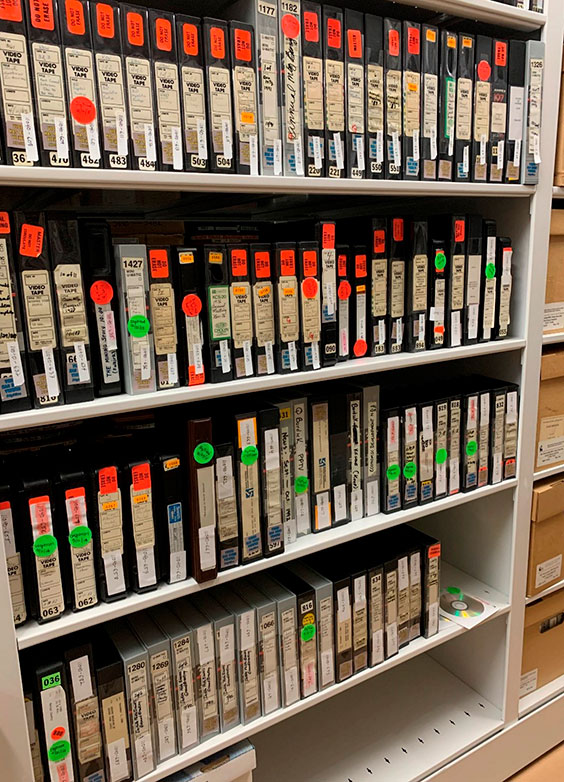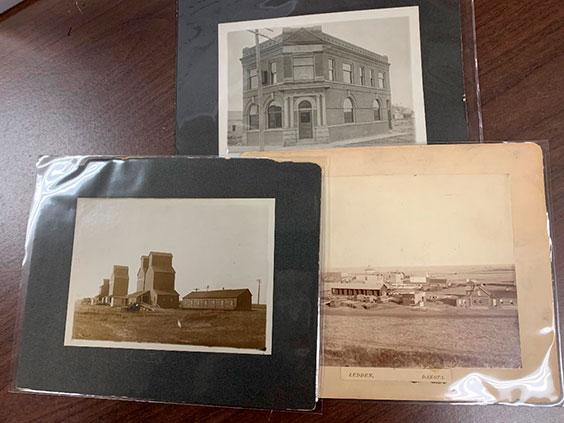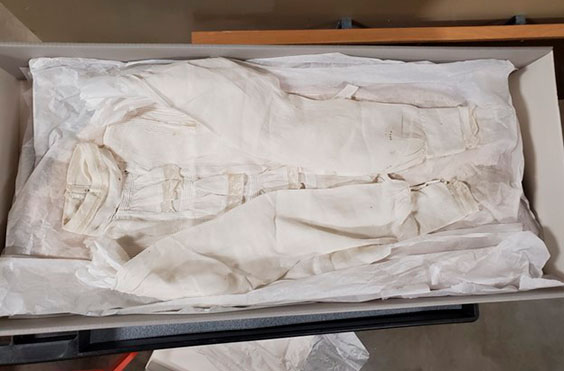
Here at the State Historical Society, we want to be sure your personal family collections are kept safe for future generations. With that in mind, we’ve prepared some guidance on caring for your collections in the event of potential flood events and water damage. We will look at preventative care tips and suggestions to follow or keep in mind as you work to protect and preserve your family treasures and history before a disaster strikes.
General advice for storing personal collections
Storage of your items should be in a space that has a stable and consistent temperature. The best storage space for home collections is a cool, clean, and relatively dry area with no direct light. We do not recommend storing items in attics or in most basements as these spaces can be humid, and the temperature may fluctuate drastically due to seasonal weather changes.
You should avoid placing items near heaters, radiators, chimneys, vents, electrical sources, and open windows. Take note whether your chosen storage area is at risk of water damage, such as being near plumbing pipes, sprinklers, open windows, vents, or sinks.
1) Housing your personal collection

VHS tapes should be stored upright in cases to prevent damage.
Housing options (basically the containers your collection is placed in) will vary depending on the items. The main consideration is whether these guard against insects and pests, block bright or direct light, and help keep objects clean and free of dust, which can scratch delicate surfaces like those of photographs.
We know people often default to basic plastic bins for storage, but plastic is not a good storage option because it will leach plasticizers that can affect the material within. We recommend acid-free boxes instead. That said, plastic is still better than nothing.
2) Buffered versus unbuffered?
When looking for housing materials online, you may come across both buffered and unbuffered options. If something has been buffered, calcium carbonate (better known as chalk) has been added to the cellulose material and acts as a buffering agent raising the pH level of the paper to be more alkaline. If the item being housed is paper or made of cellulose (like film, photographs, and cotton products) go for the buffered option. But for items that come from animals (e.g., leather, silk, wool, feathers, horsehair, and pearls) use unbuffered. This rule applies to file folders, tissue paper you wrap around objects, and boxes.
3) Considerations for general materials
Audiovisual and magnetic media: The ideal orientation for CDs, DVDs, audio, and video cassettes is to be stored upright like books, as stacking can cause stress and warping. The original containers work well for storage if they are clean and made of inert plastic. Video and audio cassettes should be wound to the beginning or the end, so that content on the tape is not exposed.

Photographs in the State Archives collections are sleeved due to high use by researchers and staff.
Flat/oversize items: For flat paper materials, a file folder is our go-to method, unless it is very weak, has tears, or is heavily creased. In that case, we would place the item in a polyester sleeve. The file folders can be stored flat or upright in a box. Speaking of tears, please do not use regular Scotch tape to fix them! There is special tape and other repair methods if you feel the items need conservation. We also recommend the removal of rubber bands, metal paper clips, and metal fasteners. If the item is oversize/poster size, then storing it may require a bit more creativity, but keep it flat with little to no pressure on top. If you must roll the item, do not roll it too tight, and remember to periodically unroll and roll it in the opposite direction.
Photographs: A common question is whether photos should always be sleeved? If you have many photographs and feel that putting them in sleeves is necessary, then we would recommend at least 3-millimeter-thick polyester, as it is the most chemically inert of the plastics used for archival storage products. But you only really need to sleeve photographs that are handled a lot, show signs of weakness or deterioration, or are of utmost importance to you. Otherwise, leaving photographs loose should not be an issue. Just store them flat or upright with some space in the box since you do not want to exert pressure on the photographs by shoving them tightly into the container.
Textiles, taxidermy, and natural materials: Textiles should be kept on padded hangers or placed flat in watertight buffered or unbuffered boxes (depending on the textile material). They should be stored away from leaky areas and sunlight, which can cause fading. Taxidermy should also be placed away from leaky areas and sunlight but on a high shelf. It’s important to use extreme caution when handling older taxidermy due to the risk of exposure to arsenic. Use coated watertight metal cases when storing wood, rocks, minerals, ceramic, and glass. Uncoated metal objects should be in a dry environment to reduce the risk of oxidation (rust).

Textile artifacts, like this circa 1880s blouse, should be stored in an acid-free box with tissue paper to support the garment. SHSND 1972.00169
While this certainly doesn’t cover every material type and situation you may encounter when caring for and housing your family’s historical items, it is a good place to start. If you have questions we haven’t addressed, our staff are happy to help. For questions related to paper, books, and photographs contact the State Archives at 701.328.2091 or archives@nd.gov. For artifact-related questions, contact our museum staff at history@nd.gov.
*This blog was co-authored with Local Government Archivist Megan Steele and two former museum interns, Zoe Harden and Emily Bruun.

